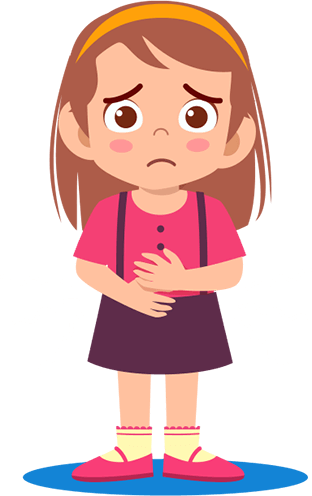
Complications caused by ignoring constipation
When your kid eats, the food passes from their stomach into the small intestine, where it breaks down, and its nutrients are absorbed. From here, the stool makes its way into the large intestine. This is where the remnants and water are collected before the stools are passed. This is what the normal functioning of the digestive tract looks like.
Childhood constipation as an emerging public health problem
by World J Gastroentrol, 2016 Aug
| Faecal incontinence | Abdominal pain | Anal fissure | Enuresis | Urinary tract infections |
|---|---|---|---|---|
| Inability to control bowel movements, causing stools to leak unexpectedly from the rectum | Severe pain due to build-up of gas or need to have a bowel movement | Tears around the lining of the anus causing severe pain | Inability to control urination, causing bedwetting | Infection caused from bacteria in urine traveling up to the bladder |
80% of kids with faecal incontinence experience rejection by peers due to faecal odour and have lower self-esteem. Source: ncbi.nlm.nih.gov

